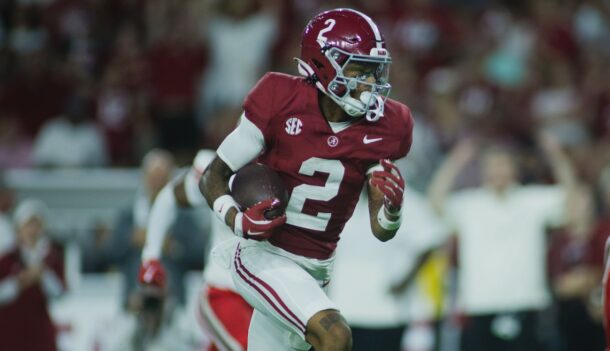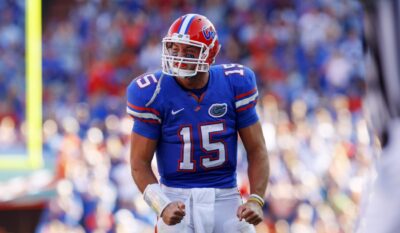
Florida football: Kyle Trask is marvelous, but Gators are much more than their Heisman candidate QB
The last time Florida played Kentucky, Kyle Trask was a backup quarterback playing behind Feleipe Franks, who many Gators fans felt might also be behind highly-touted redshirt freshman Emory Jones on the Florida depth chart.
Fourteen months later, Trask is not just Florida’s starting quarterback, he’s a likely Heisman Trophy finalist when the award is given in January. Trask might even be the best football player in the SEC, and the fact that he’s in the conversation is why Florida debuted at No. 6 in the College Football Playoff rankings and control their own destiny for a spot in the Playoff.
Trask’s story is remarkable. But like Joe Burrow’s amazing story at LSU a year ago, the constant retelling of Trask’s rise from obscurity to stardom risks overshadowing the fact that the team Dan Mullen has built around the senior quarterback is pretty darned good, too.
Yes, the Gators offense ranks 5th nationally in S&P+ offensive efficiency (efficiency adjusted to account for tempo and opponent), 3rd in success rate and 8th in yards per play and scoring offense. Yes, Trask is the sun around which the Florida offense orbits.
Yet there are a host of things Florida also does exceptionally well on offense that might be getting overlooked while people fawn over Trask’s remarkable numbers. Here are 2 things that make the Florida offense go:
The Gators limit sacks and quarterback pressures
Florida’s offensive line was much-maligned a season ago, unable to get much leverage in the run game and subject to breakdowns against elite defenses in the passing game. Florida returned a combined 89 O-line starts this season, though, and the talent has gone from 5 blue chips when Mullen arrived to 11 this season, a testament to how well Florida has replenished an empty cupboard at the position. Still, whether the line would improve was a big question mark entering the 2020 season.
The Gators have answered the bell. Stone Forsythe grades out as one of the nation’s best offensive tackles in passing situations, per Stats Solutions. The Gators as a whole rank an impressive 10th nationally in sack percentage allowed, surrendering a sack on only 2.63 percent of passing downs. Florida ranks 9th in fewest pressures allowed as well, which means that for the most part, defenses aren’t hitting Trask. The result is a quarterback in the Heisman conversation and an offensive line that slots in just behind Texas A&M’s as the SEC’s best in pass protection.
Florida has a stable of receivers and tight ends that stress secondaries
Among the SEC’s ranked teams, only Florida and Alabama feature 6 pass catchers with 10 receptions or more. Florida features 9 players with 8 receptions or more, 3 more than any other SEC program.
Why does this matter? It means defenses can’t necessarily key on Florida’s All-America tight end, Kyle Pitts. If defenses elect to take Pitts away, they are still going to find it difficult to contain prototypical NFL wideout Trevon Grimes or the shifty playmaker, Kadarius Toney. Even behind Pitts, who has missed 2 1/2 games after suffering a concussion on an illegal hit from Lewis Cine in the Georgia game, the Gators have found production from backup tight ends Keon Zipperer and Kemore Gamble (14 receptions, 242 yards, 5 touchdowns between them).
Florida’s absurd depth at the receiver and tight end positions, coupled with Mullen’s ability to scheme and put players in positions to be successful, puts extreme stress on opposing defenses. It’s a big reason the Gators execute at such a successful rate.
• • •
It isn’t just offense that makes this Gators team, either.
But as difficult as Florida has had it on the back end, they are coming together up front.
Florida’s pass rush is improving and dangerous
Florida struggled to set the edge early in the season and get any leverage inside. That’s a bad combination.
The situation has improved dramatically since the return of senior defensive tackle Kyree Campbell from an injury. Florida now ranks 20th nationally in team sacks, 17th in quarterback pressures and 37th in sack percentage. A season ago, the Gators were top 10 across the board in those categories, but the dropoff now, especially with Campbell back in the fold, doesn’t appear as steep.
Ima just leave this up here….Goodnight ?? @_ZachAttacks @CampbellKyree13 #GatorStandard #DBlok pic.twitter.com/R4VT6qaT8n
— David Cooper (@1CoachCoop) November 24, 2020
In fact, Florida has produced back-to-back SEC Defensive Linemen of the Week performances in wins over Arkansas and Vanderbilt, a sign the Gators are continuing to get better up front.
• • •
The Gators also do a few other things extremely well to help offset some of their defensive issues. Here are 2 of the biggest:
Florida doesn’t beat itself with penalties or turnovers
The Gators are the SEC’s least-penalized team, averaging just more than 4 penalties a game, good for 14th best nationally. That’s a stark contrast from the McElwain and Muschamp eras, when Florida finished in the top half of the SEC in “fewest penalties” only twice (2011, 2012).
Florida also doesn’t turn the ball over much. The Gators have thrown 5 interceptions, but 2 came in “garbage time.” Florida has also lost 3 fumbles, most notably the Malik Davis fumble that halted what was likely a game-winning drive and handed the ball to Texas A&M, who put together a game-winning drive of their own in response. That turnover was costly, of course. But on the year, turning the ball over less than once a game, coupled with Florida’s ability to limit penalties, has made the Gators the type of team that simply won’t beat themselves.
Florida’s special teams are the best in the country
Analytics more or less bear this claim out: Florida is tied with Texas State and LSU for 1st in the country in S&P+ special teams ranking, which evaluates the effectiveness of coverage units as well as punting and kicking teams. Florida has limited punt return yardage better than anyone in the SEC, and Gators punter Jacob Finn, while ranking only 48th nationally in yards per punt, ranks in the top 25 in net as a result.
Placekicker Evan McPherson has been the most accurate kicker in the SEC since he arrived on campus 3 seasons ago, and it has been the same story this season, only with more range.
Evan McPherson For Groza.#Gators by 20 in Duval. pic.twitter.com/iz9zwO0Kfz
— InAllKindsOfWeather.com (@AllKindsWeather) November 7, 2020
McPherson has missed only 5 field-goal attempts in his entire career and 1 this season. He’s a legitimate weapon, and one who might matter when/if the Gators play for a championship next month.
There’s no debate Trask is the heartbeat of this Florida offense and one of the leaders of the team. But as the above statistical profiles demonstrate, Florida is a deep, dangerous, complete team, one that is more than a star quarterback on a hot streak.
Neil Blackmon covers Florida football and the SEC for SaturdayDownSouth.com. An attorney, he is also a member of the Football and Basketball Writers Associations of America. He also coaches basketball.







